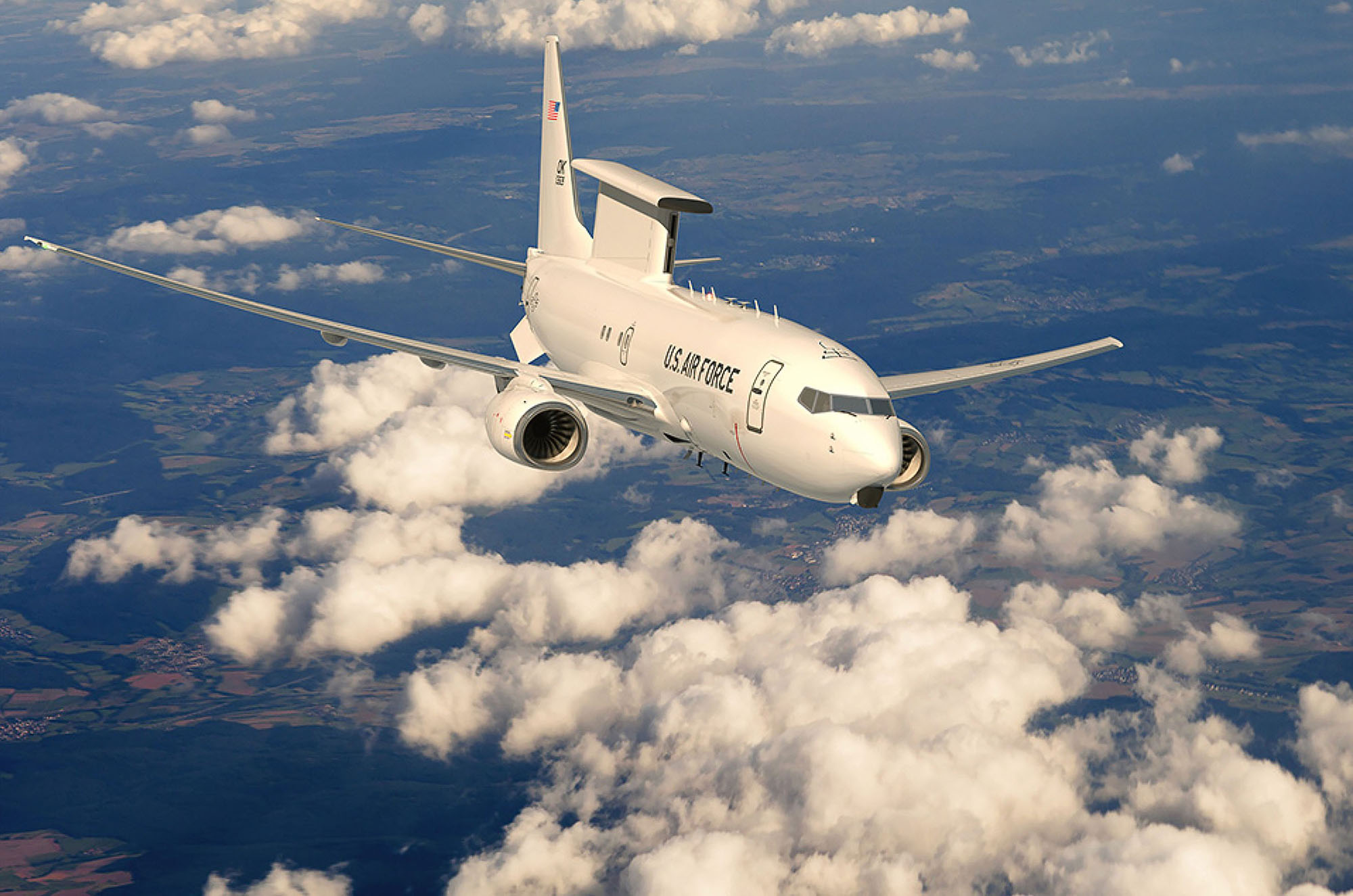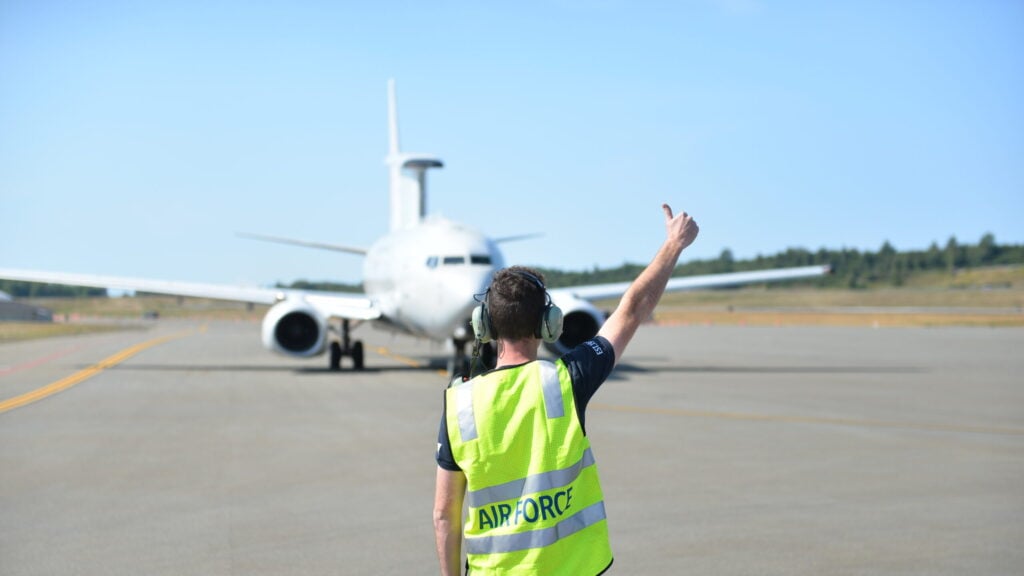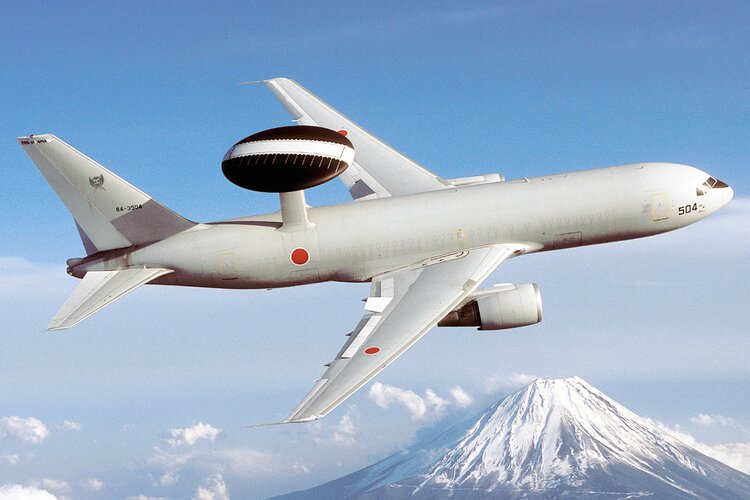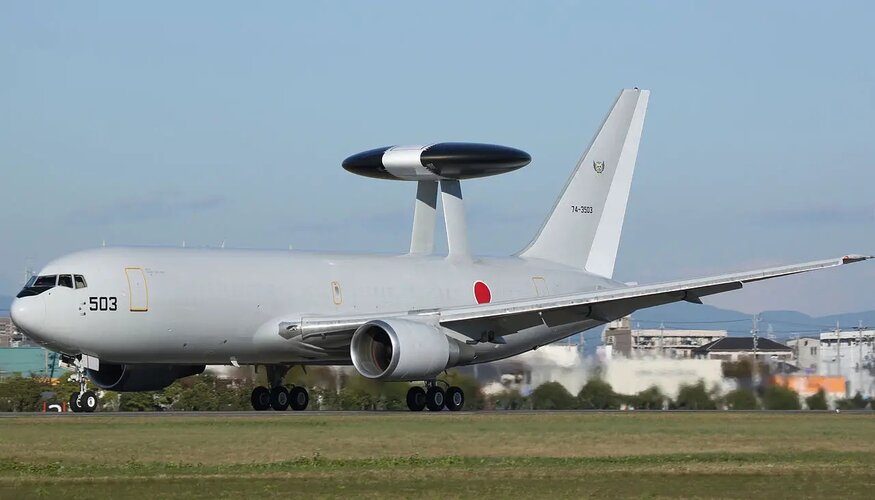Forest Green
ACCESS: Above Top Secret
- Joined
- 11 June 2019
- Messages
- 9,546
- Reaction score
- 17,529
“The big surprise there was [an] unexpected amount and degree of non-recurring engineering required to meet the requirement that the [US] Air Force specified, which we thought was very, very close to what the UK is currently procuring from Boeing,” Hunter said. According to an Air Force spokesperson, that non-recurring engineering work is a major driver in the difficulty to reach an agreement on price.
The service is working with the plane maker to “understand the specificity of what’s kind of implied in the Boeing proposal,” Hunter added, which will help identify features that are essential and those that could either be deferred or deemed unnecessary.

What kind of hot garbage of a company is BDS these days? This is a bloody joke. The core specifications shouldn't be that far off from what the RAAF paid for to develop and upgrade and even accounting to new specifications tailored for USAF need, there's no reason for the price to go up that higg when there are so many new orders lined up woth future users.
Air Force 'having a hard time' on E-7 Wedgetail price negotiations with Boeing: Kendall - Breaking Defense
Development of the Air Force’s first two rapid prototype radar planes proved more difficult than expected, according to acquisition chief Andrew Hunter.breakingdefense.com
What kind of hot garbage of a company is BDS these days? This is a bloody joke. The core specifications shouldn't be that far off from what the RAAF paid for to develop and upgrade and even accounting to new specifications tailored for USAF need, there's no reason for the price to go up that higg when there are so many new orders lined up woth future users.
You want to bet on that?What kind of hot garbage of a company is BDS these days? This is a bloody joke. The core specifications shouldn't be that far off from what the RAAF paid for to develop and upgrade and even accounting to new specifications tailored for USAF need, there's no reason for the price to go up that higg when there are so many new orders lined up woth future users.

The Air Force won’t say what it thinks is a fair cost for the E-7, but in a hearing of the Senate Armed Services Committee this week, Sen. Markwayne Mullin (R-Okla.) said a figure of $2.5 billion per airplane is rumored, and neither Air Force Secretary Frank Kendall nor Chief of Staff Gen. David W. Allvin challenged that figure.
Well, I still believe, and that dearly, that they aren't crazy enought to jack up the prices that much. Though, even still, it sounds absurd... One way or the other, I seriously think that the programme should see some competition, and IAI CAEW has been a joint programme with L3 Harris for a while.An Air Force spokesperson said the $2.5 billion per jet figure is “inaccurate,” but declined to comment further.
The E-7s in question would be prototypes, and that cost would not necessarily correlate to the other 24 Wedgetails the Air Force plans to buy

So, where's the new US AWACS which is going to be in service in time to replace E-3? I don't see it.Timeframes matter.
E-7 was fielded in the 2000s. Ofcourse the USAF designing its sensing platforms NOW will want to make them more capable and survivable.
Same with Tempest. Its timeframe trails NGAD by about 6-8 years.
On one hand you have a 2000s design Awacs and 2020s design Counter Air for E7 and Tempest.
On the other you have NGAD and Future US Awacs being designed and fielded in the same timeframe.
Exactly. The E3s are out of life, and the E7 is IIRC the 2nd or 3rd proposed replacement for them.So, where's the new US AWACS which is going to be in service in time to replace E-3? I don't see it.
E-7 is needed by the USAF because there's no other US system or set of systems which can replace the capabilities of E-3 in time. The surviving E-3s are wearing out.
Boing has built a number of E-767s for Japan... but they were simply 767s with the radome, radar, and systems of the E-3 - so nothing new.Exactly. The E3s are out of life, and the E7 is IIRC the 2nd or 3rd proposed replacement for them.
One version was the E10. A plane intended to do both AWACS and JSTARS at the same time. Oops, the two radars didn't like working on the same airframe, and a 737 is a little too small to hold the JSTARS radar (engines block the view a little). Edit: E10 was originally proposed on 767 airframe, then downsized to 737 to save some money.
I think there was also an E767 variant proposed for the USAF, but I don't know how serious that was.


A UASF E-767 type would require a new radar etc... with the E-7 the radar is already developed and in production.
There is a lot more than just the rotating dome and its supports involved with the AWACS radar--- all the electronics etc need to be different.No need for a new radar, the MESA tophat was already planned for Spiral 2 increment of the E-10. That structural design could be carried forward.
Each Spirals of E-10MC2A (1, 2 and 3) were later separated into their own stand-alone models, E-10A, B and C respectively, which solely focused on their intended missions.One version was the E10. A plane intended to do both AWACS and JSTARS at the same time. Oops, the two radars didn't like working on the same airframe, and a 737 is a little too small to hold the JSTARS radar (engines block the view a little). Edit: E10 was originally proposed on 767 airframe, then downsized to 737 to save some money.
Tophat is the name of the endfire array component of the MESA system, afaik. The whole system is just simply "MESA".MESA tophat
Both of those were being touted during the whole of the 1970s--- but there was no way the USAF would base a critical warfighting system on a "paper" airplane when it looked like their order may well be the only ones ever for that type aircraft!Have the McDonnell Douglas DC-10 or Lockheed L-1011, specifically their proposed twinjet variants, ever been considered as AWACS platforms? What about the Airbus A300?
View attachment 729202
View attachment 729203
Raytheon bid as prime contractor using the A310 for the Australian contract that was won by the Wedgetail. It used a non rotating AESA from IAI, albeit in a conventional E3 style radome.As for the A300... while there was any US manufacturer capable of building a suitable airframe, there was no chance whatsoever they would select a foreign design in that time period.
That was some 29 years after the AWACS contract award.Raytheon bid as prime contractor using the A310 for the Australian contract that was won by the Wedgetail. It used a non rotating AESA from IAI, albeit in a conventional E3 style radome.




Good luck with that, I don't think NG can build new radars that fast...
French MPs call for AWACS aircraft to be replaced by 2025
French MPs call for AWACS aircraft to be replaced by 2025.armyrecognition.com
Saab Erieye ER mounted on Bombardier Global 6k possibly favored to replace AdlAE E-3F AWACS (link in Fr - You might want to use an online translator):
French MPs call for AWACS aircraft to be replaced by 2025
French MPs call for AWACS aircraft to be replaced by 2025.armyrecognition.com
They're certainly not going to get E-7 Wedgetails in that time.Saab Erieye ER mounted on Bombardier Global 6k possibly favored to replace AdlAE E-3F AWACS (link in Fr - You might want to use an online translator):
French MPs call for AWACS aircraft to be replaced by 2025.
- 14 Nov, 2024 - 15:28
- Defense News Aerospace 2024
According to information published by Opex360 on November 11, 2024, a recent parliamentary report has highlighted the urgent need to accelerate the replacement of the E-3F AWACS aircraft operated by the French Air Force.
The report points out that prolonging the service life of the current E-3F fleet until 2035 could be counterproductive.
.....
The report, therefore, recommends a 2025 timeline for launching a replacement program as part of the next annual adjustment of the military budget.
